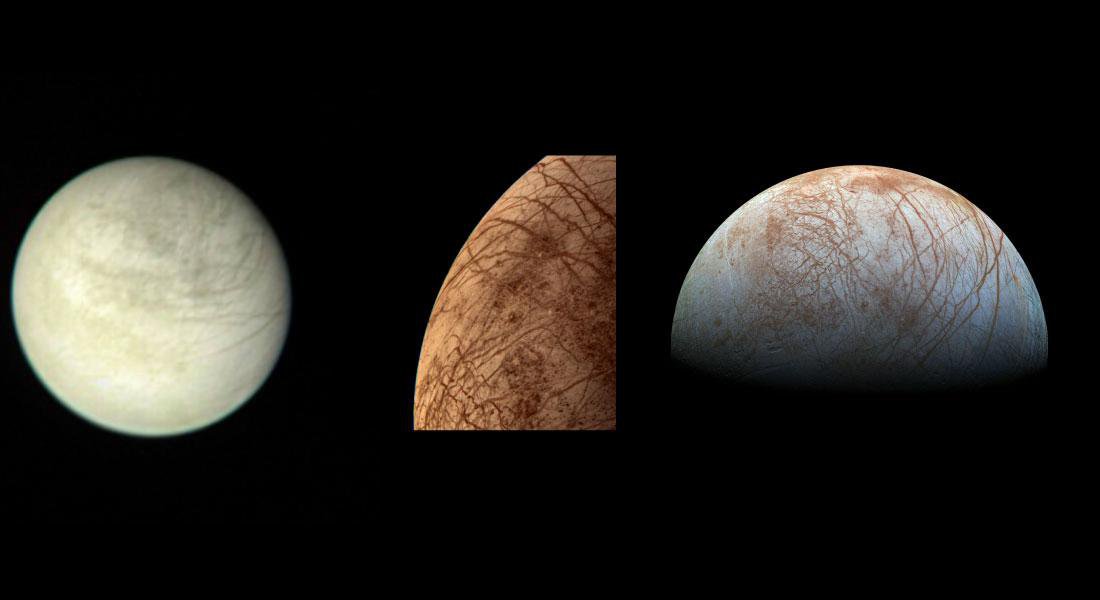NASA’s Europa Clipper is one of the most anticipated missions of the coming decade, in large part because its target, the large Jovian moon Europa, is considered one of the most likely places in our solar system that extraterrestrial life might exist. If Europa is harboring alien microbes, however, they’re likely to be buried deep beneath the moon’s thick icy crust in a vast subsurface ocean. Unlocking the secrets of this water world isn’t going to be easy, but the Clipper team has a plan to make the most of the opportunity they have: If you can’t get to the ocean, let the ocean come to you.
There is a good possibility that Europa regularly ejects plumes of water into space, squeezing the water through cracks in the icy surface and blasting it off-world. With Europa’s low gravity (the moon is slightly smaller than Earth’s Moon) and lack of atmosphere, water plumes could theoretically reach many hundreds of kilometers high, offering a chance to ‘taste’ Europa’s oceans without ever touching down.
This stunt has been done before elsewhere in the Solar System. In 2015, the Cassini spacecraft orbiting Saturn flew through plumes erupting from Enceladus, a small water world not entirely dissimilar to Europa in composition. Cassini recorded hints of organic compounds, salts, and minerals, all of which suggested the tantalizing possibility of habitable ecosystems on Enceladus. Cassini’s instrument suite included a ‘cosmic dust analyzer,’ allowing it to study any tiny particles it encountered as it flew through the plumes. Europa Clipper will carry a similar instrument.

The first challenge for the Clipper mission will be to determine whether these plumes exist on Europa at all. Unlike Enceladus, where we had clear indications of the plumes’ existence, the evidence for plumes on Europa are far from conclusive. “We’re still in the space where there’s really intriguing evidence, but none of it is a slam dunk,” said Matthew McKay Hedman, a researcher with Europa Clipper’s spectrometer team. Europa’s plumes, if they exist, may also be harder to find, being weaker and more sporadic.
The Clipper spacecraft will search for plumes using several of its instruments. Its cameras will watch for their silhouettes against the bright light reflected from Jupiter. Plumes may also be visible in ultraviolet, and if so, the team will be able to use spectroscopy to determine their chemical makeup. Clipper will also be equipped with a thermal imager to look for hotspots in the ice sheets, which would hint at recent or ongoing eruptions.
Whether Clipper finds plumes or not, its instruments will enable it to study Europa in more detail than ever before. To be clear, the mission isn’t designed to look for life directly – instead, its job is to determine habitability – to find out whether life could exist there. The chemistry and conditions on Europa need to be just right for it to harbor life, and Europa Clipper is the first step in determining its viability for life.
The Clipper will be working in a difficult environment. Radiation levels around Jupiter can be hazardous to its instruments with extended exposure, meaning that it can’t simply sit in orbit around Europa, which is Jupiter’s sixth-closest moon. Instead, the Clipper will circle Jupiter in an elongated orbit, dipping in close and fast, screaming by Europa before rushing out to safer, more distant space to transmit its data back to Earth. There are 44 such flybys planned, and with carefully calculated gravity assists, the Clipper should be able to map Europa’s entire surface by the end of its primary mission.
NASA’s Europa Clipper is set to launch on a Falcon Heavy Rocket in October 2024, arriving at Europa in 2030.
Learn More:
Are Water Plumes Spraying From Europa? NASA’s Europa Clipper Is on the Case. NASA/JPL-Caltech.
Featured Image: Left -Jupiter’s moon Europa, taken on March 2, 1979, by NASA’s Voyager 1 spacecraft. Middle – Europa, taken by NASA’s Voyager 2 spacecraft on July 9, 1979. Right – a view of Europa made from images taken by NASA’s Galileo spacecraft in the late 1990s. Credit: NASA/JPL-Caltech.

